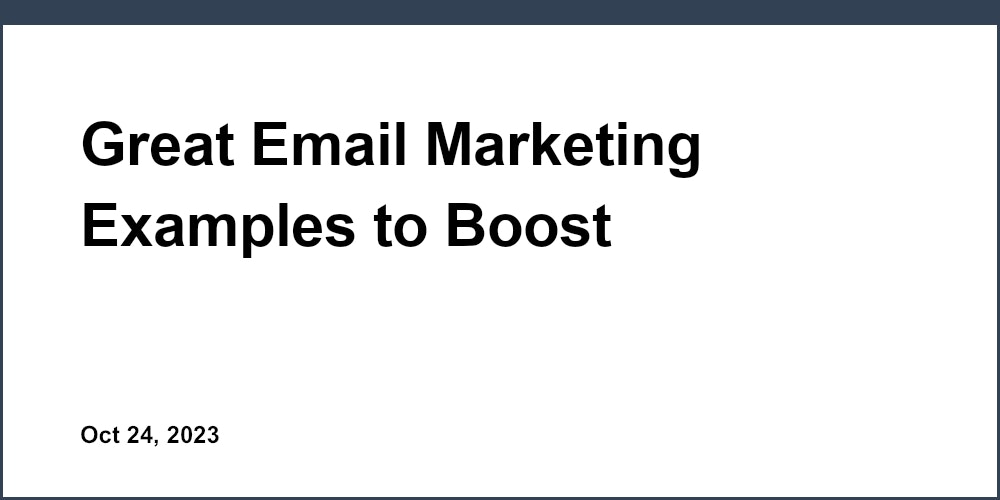Introduction: Why Optimizing Timing Dramatically Boosts Email Success
Determining the optimal time to send marketing emails is crucial yet challenging. Email timing impacts key metrics like open rates, click rates, conversions, and unsubscribes. Sending at the wrong time leads to lower engagement and deliverability, directly hurting ROI. Recent studies have uncovered the best times for various industries and demographics based on inbox habits. Aligning your email timing with audience behaviors can dramatically improve results. This article summarizes key research to help you identify your ideal timing.
AM vs. PM: Weekday Preference Depends on Audience
The morning versus afternoon decision is a major email timing debate. AM sends cater to those starting their workdays and triaging overnight messages. PM takes advantage of lulls after work and evening routines. Overall B2C engagement skews afternoon, while B2B favors mornings. But optimal timing ultimately depends on your audience.
Afternoons Drive More Opens for Most B2C Verticals
Retail sees 12-5pm as ideal based on a Shopify study. Consumers check emails more often after lunch breaks. Sprout Social found 2-5pm is best for nonprofits when supporters are less distracted. Fashion/beauty research by HubSpot shows 3pm hits an afternoon lull for shopping. Travel sites succeed with 1-4pm sends when wanderlust peaks going into evenings.
Mornings Edge Out Afternoons for Most B2B Engagement
A SuperOffice study shows 8-10am as optimal for B2B when professionals start workdays. Martech company Snov.io finds 6-8am best for global tech teams across time zones. Finance clicks most from 8-11am during market shifts per Constant Contact. Agencies favor late morning to sync with meetings and workload.
Evening Cutoff: Finding The Last Call Before Disengagement
Engagement drops in late evenings as people disconnect. But some sectors like publishing drive opens until 11pm when usage spikes. Research from HubSpot shows 8pm as the ideal cutoff to avoid annoying most demographics. However, transactional or service emails warrant later times if urgency outweighs intrusiveness. Test your audience's habits and set data-driven evening limits.
Weekend Strategy: Promotions Can Thrive Outside Work Mode
Unsurprisingly, weekday sends see higher engagement with people in "work mode". But weekends let brands differentiate against empty inboxes if used strategically. Avoid Saturday morning and all-day Sunday when engagement plummets per Snov.io data. Promotions and newsletters can thrive weekends for smaller brands looking to catch up attention. However, relevance and intrusiveness must be balanced with weekend sends.
Holidays and Events: Tie-ins Beat Blanket Avoids
Many assume holidays bring lower engagement as people focus elsewhere. But Eventbrite research shows holidays like Cyber Monday can provide spikes when tied to campaigns. Avoid untargeted holiday sends. Consider promoting tie-in offers or content that complements events without seeming opportunistic. Relevance trumps general holidays for most verticals outside retail.
Beyond Opens: Optimizing Email Timing For Clicks and Conversions
Opens are just one success metric. Ensure your call-to-actions align with customer motivations based on timing data and context. Transactional confirmation emails see high conversion regardless of sends per HubSpot. But timing should be tailored for newsletters vs. promotions when optimizing for clicks and conversions.
Subscriber Segmentation: Personalizing Timing by Persona
Leverage segmentation to tailor timing instead of relying on broad vertical trends. Act-On Software recommends morning sends for VIPs while targeting deal seekers later afternoon when urgency increases. Geotargeting enables timezone personalization no matter where subscribers live. Survey subscribers directly on timing preferences for data-backed insights. Then A/B test segmented groups on timing when launching campaigns.
Tips For Designing Effective Email Timing Experiments
Analyze past campaign data as a baseline before testing new timing. While considering industry research, ultimately test what resonates with your specific subscribers directly. Limit testing to one major variable like send time initially before adding layers. Give each timing test at least 2 weeks per SuperOffice recommendations before drawing conclusions then optimize across longer periods. Use timing to complement strong creative, targeting, and automation. Also leverage tools like Sensorpro for easy scheduling, A/B testing, and campaign analytics.
Conclusion: Consistent Testing Beats Guesswork
No universal best time exists across all audiences and goals. Regular testing uncovers the optimal timing for your subscribers and objectives. Personalize and segment timing based on personas. Refine through ongoing optimization instead of assumptions. With the right cadence, you can continually improve email timing and boost all engagement metrics.


